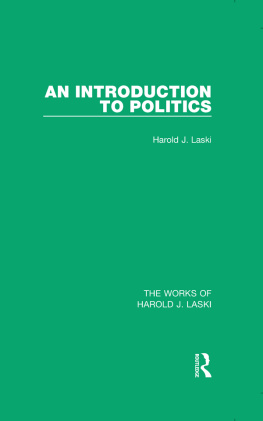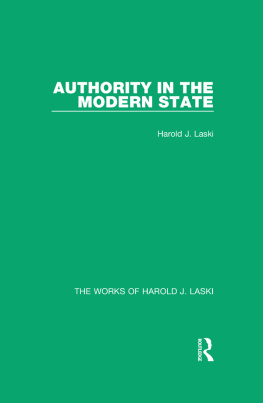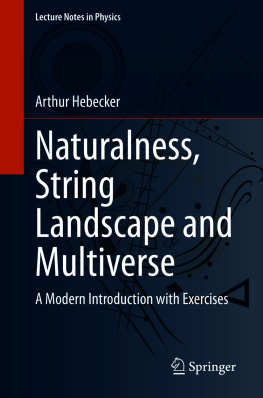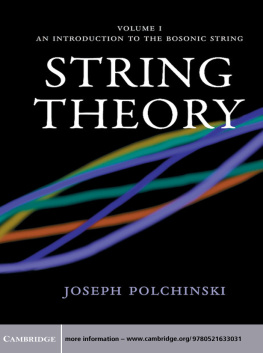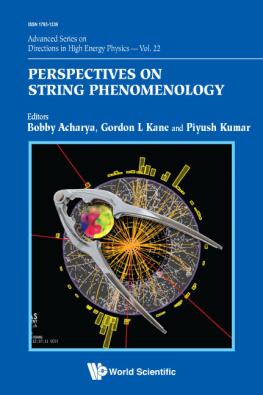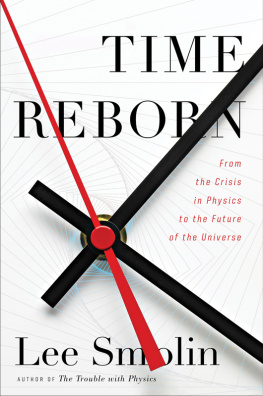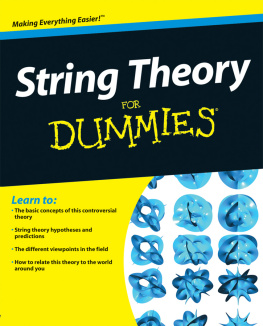Harold Erbin - String Field Theory; Modern Introduction
Here you can read online Harold Erbin - String Field Theory; Modern Introduction full text of the book (entire story) in english for free. Download pdf and epub, get meaning, cover and reviews about this ebook. publisher: Springer International Publishing, genre: Children. Description of the work, (preface) as well as reviews are available. Best literature library LitArk.com created for fans of good reading and offers a wide selection of genres:
Romance novel
Science fiction
Adventure
Detective
Science
History
Home and family
Prose
Art
Politics
Computer
Non-fiction
Religion
Business
Children
Humor
Choose a favorite category and find really read worthwhile books. Enjoy immersion in the world of imagination, feel the emotions of the characters or learn something new for yourself, make an fascinating discovery.
- Book:String Field Theory; Modern Introduction
- Author:
- Publisher:Springer International Publishing
- Genre:
- Rating:5 / 5
- Favourites:Add to favourites
- Your mark:
- 100
- 1
- 2
- 3
- 4
- 5
String Field Theory; Modern Introduction: summary, description and annotation
We offer to read an annotation, description, summary or preface (depends on what the author of the book "String Field Theory; Modern Introduction" wrote himself). If you haven't found the necessary information about the book — write in the comments, we will try to find it.
String Field Theory; Modern Introduction — read online for free the complete book (whole text) full work
Below is the text of the book, divided by pages. System saving the place of the last page read, allows you to conveniently read the book "String Field Theory; Modern Introduction" online for free, without having to search again every time where you left off. Put a bookmark, and you can go to the page where you finished reading at any time.
Font size:
Interval:
Bookmark:
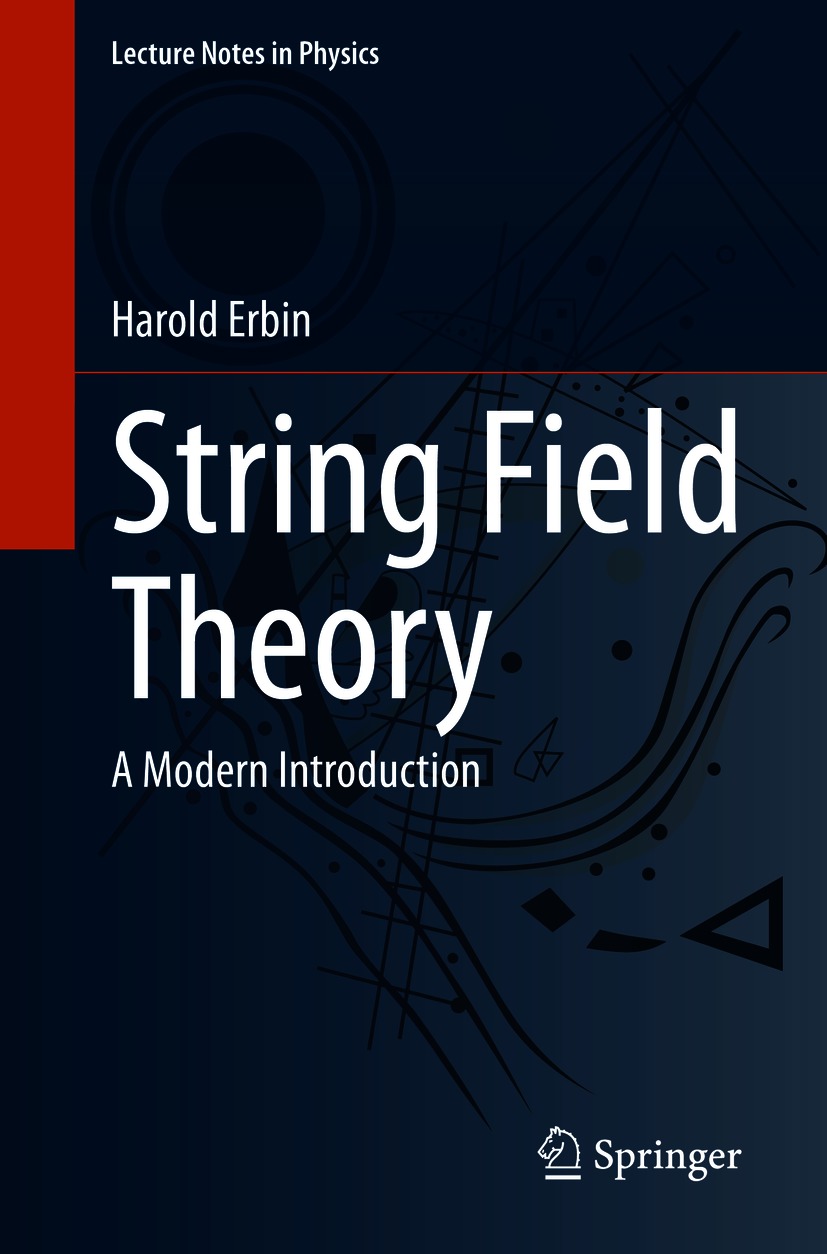
The Lecture Notes in Physics
The series Lecture Notes in Physics (LNP), founded in 1969, reports new developments in physics research and teaching - quickly and informally, but with a high quality and the explicit aim to summarize and communicate current knowledge in an accessible way. Books published in this series are conceived as bridging material between advanced graduate textbooks and the forefront of research and to serve three purposes:
to be a compact and modern up-to-date source of reference on a well-defined topic;
to serve as an accessible introduction to the field to postgraduate students and non-specialist researchers from related areas;
to be a source of advanced teaching material for specialized seminars, courses and schools.
Both monographs and multi-author volumes will be considered for publication. Edited volumes should however consist of a very limited number of contributions only. Proceedings will not be considered for LNP.
Volumes published in LNP are disseminated both in print and in electronic formats, the electronic archive being available at springerlink.com. The series content is indexed, abstracted and referenced by many abstracting and information services, bibliographic networks, subscription agencies, library networks, and consortia.
Proposals should be sent to a member of the Editorial Board, or directly to the responsible editor at Springer:
Dr Lisa Scalone
Springer Nature
Physics
Tiergartenstrasse 17
69121 Heidelberg, Germany
lisa.scalone@springernature.com
More information about this series at http://www.springer.com/series/5304

This Springer imprint is published by the registered company Springer Nature Switzerland AG.
The registered company address is: Gewerbestrasse 11, 6330 Cham, Switzerland
This book grew up from lectures delivered within the Elite Master Program Theoretical and Mathematical Physics from the Ludwig-Maximilians-Universitt during the winter semesters 20172018 and 20182019.
The main focus of this book is the closed bosonic string field theory (SFT). While there are many resources available for the open bosonic SFT, a single review [2] has been written since the final construction of the bosonic closed SFT by Zwiebach [5]. For this reason, it makes sense to provide a modern and extensive study. Moreover, the usual approach to open SFT focuses on the cubic theory, which is so special that it is difficult to generalize the techniques to other SFTs. Finally, closed strings are arguably more fundamental than open strings because they are always present since they describe gravity, which further motivates my choice. However, the reader should not take this focus as denying the major achievements and the beauty of the open SFT; reading this book should provide most of the tools needed to feel comfortable also with this theory.
While part of the original goal of SFT is to provide a non-perturbative definition of string theory and to address important questions such as classifying consistent string backgrounds or understanding dualities, no progress on this front has been achieved so far. Hence, there is still much to understand, and the recent surge of developments provides a new chance to deepen our understanding of closed SFT. For example, several consistency properties of string theory have been proven rigorously using SFT. Moreover, the recent construction of the openclosed superstring field theory [3] together with earlier works [1, 46] shows that all types of string theories can be recast as a SFT. This is why, I believe, it is a good time to provide a complete book on SFT.
The goal of this book is to offer a self-contained description of SFT and all the tools necessary to build it. The emphasis is on describing the concepts behind SFT and to make the reader build intuitions on what it means. For this reason, there are relatively few applications.
The reader is assumed to have some knowledge of QFT and a basic knowledge of CFT and string theory (classical string, NambuGoto action, light-cone and old-covariant quantizations).
The text is organized on three levels: the main content (augmented with examples), computations and remarks. The latter two levels can be omitted in a first lecture. The examples, computations and remarks are clearly separated from the text (respectively, by a half-box on the left and bottom, by a vertical line on the left and by italics) to help the navigation.
Many computations have been set aside from the main text to avoid breaking the flow and to provide the reader with the opportunity to check by themself first. In some occasions, computations are postponed well below the corresponding formula to gather similar computations or to avoid breaking an argument. While the derivations contain more details than usual textbooks and may look pedantic to the expert, I think it is useful for students and newcomers to have complete references where to check each step. This is even more the case when there are many different conventions in the literature. The remarks are not directly relevant to the core of the text, but they make connections with other parts or topics. The goal is to broaden the perspectives of the main text.
Font size:
Interval:
Bookmark:
Similar books «String Field Theory; Modern Introduction»
Look at similar books to String Field Theory; Modern Introduction. We have selected literature similar in name and meaning in the hope of providing readers with more options to find new, interesting, not yet read works.
Discussion, reviews of the book String Field Theory; Modern Introduction and just readers' own opinions. Leave your comments, write what you think about the work, its meaning or the main characters. Specify what exactly you liked and what you didn't like, and why you think so.



